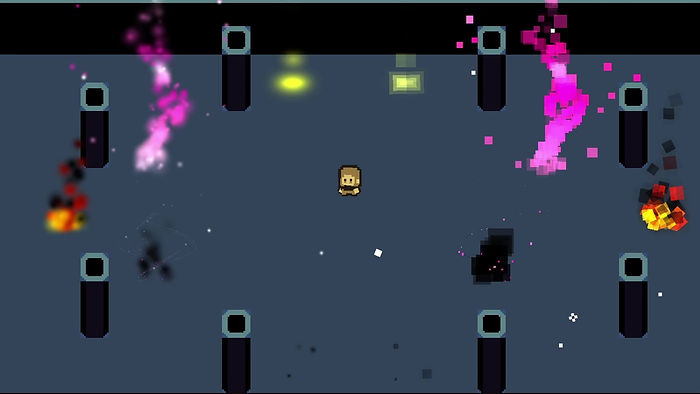
NJUMA
/ˈnjuːmə/
(Pneuma: “wind, breath, spirit”)
Received $2000 as winner of the Lv.99 Game Jam Narrative Award

Gameplay Designer
Technical Designer
VFX Artist
10 Days

Team size
5

Narrative

PC

Singleplayer

15 min

Concept
"NJUMA" was made for the Lv.99 Game Jam 2023 which lasted 10 days. We were a team of 5 people and the theme was
"Take a deep breath". We chose to approach this narratively where you as the main character take your final breath. After which, you act as the family spirit guide helping your descendants as they draw their final breath.


Map
"NJUMA" consists of four doors leading to different generations in the protagonist's family. Between your encounters, you go back to the "main hub".

Progression
The progression of the player's choices is visualized directly on the ancestral tree. One of the critical narrative points is the first choice the player makes. Watering the decaying tree or chopping it down. I initially designed the tree progression to have equal significance to all the choices during a run. But after consideration of the scope and making certain decisions more purposeful, I opted to make the first and last choices to be the most impactful and critical to determine the ending you got.

Gameplay balance
So, how did I balance actual gameplay with narrative in mind?
Firstly, making the core gameloop was the way to keep it consistent to begin with.
The second thing was making a first draft of the first-time user experience.
This helped us all to be on the same page of what the experience was.






The third step was getting to the specifics of the dialogue system. Making a draft for it helped us know the ordering and exactly how the gameplay would look like down to the smallest of details.
Since we had a nonverbal storytelling (for the first playthrough) I had to make sure to keep a constant communication between us to make sure we were telling it the right way.
The hardest part of balancing was to not tell too much, but still engage the player.



And how did I combat this?
Firstly, I needed to immediately catch the player's attention to the character they will be interacting with. A universal exclamation mark(!) made sure most of our playtesters went to the NPC. At this point we also have items scattered slightly around to let the players start building the scenario in their heads. Every item here is crucial. We made sure to not put an item in the world that didn't matter.
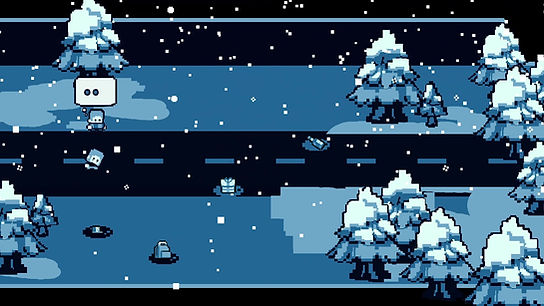


Challenges
Closed blinds
Unclear vision in the team
Making the narrative, art and gameplay come together was a difficult task. Things had to make sense, and very early on it just didn't. I started to lose track on things and questions were piling up instead of answers.
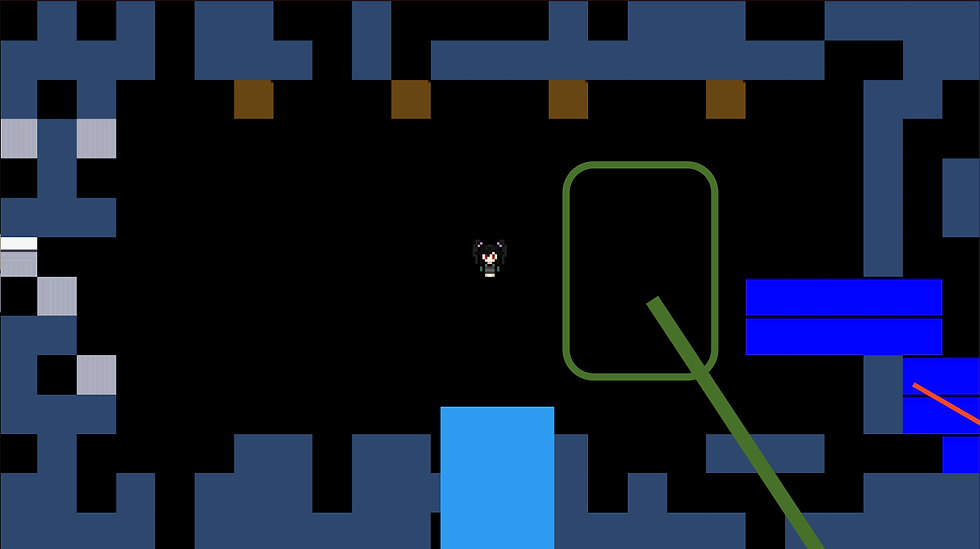
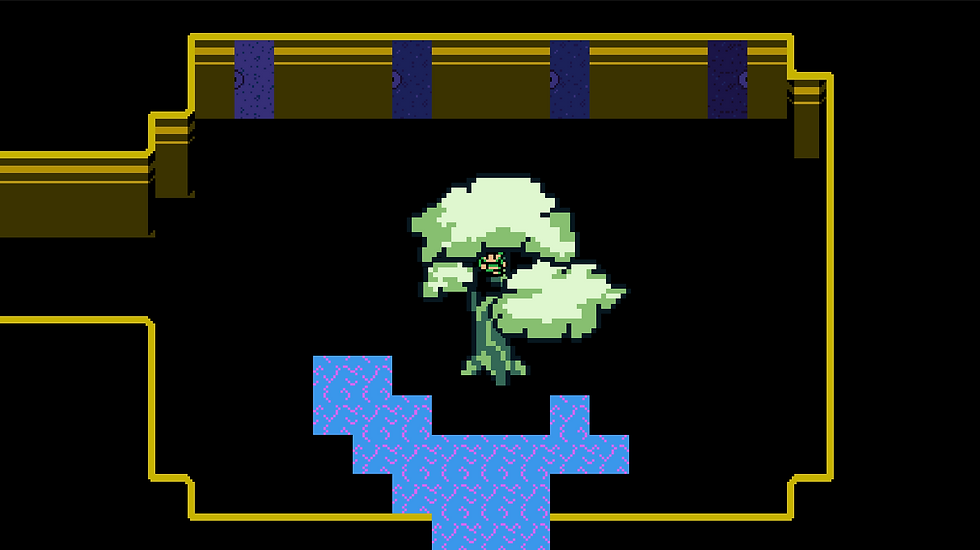






Opening the blinds
Taking charge and let it flow
Being both the level designer and technical/gameplay designer, I took more of a lead role. As the process of implementation began, I kept having dialogues with everyone about the scope. Working closely with Benoit (Narrative designer) helped us understand what questions had to be answered, and what could be delayed to not stop us on our tracks. So I became the one setting boundaries on the narrative in regards to gameplay.
Big scope
10 days and a dream
A lot of decisions we made felt "tangible". But as time went on, the tangible became unattainable.
We wanted 8 doors and scenarios. We wanted 4-6 items per room. We wanted a tree reflecting every single decision.
But how would we do that?







Reality check
10 days and a (smaller) dream
Well, to answer the question we wouldn't.
8 doors became 4.
6 items became 2-4.
And as mentioned above, the decisive decisions became fewer.
This is something great we did as a team. We detached from initial design choices and we delivered a game from start to finish.
With fewer rooms, we could make every room even more special. Differentiating the palettes, having distinct music and sound and making the decisions matter.
Technical design
Being a link between designers and programmers was something I made sure to do as a technical designer. But because I was in charge of the levels, It made it easier to take full responsibility for putting the programmers' systems into place as well.
Level loaders for smoother scene transitions.
VFX elements used to accurately simulate raindrops colliding or leaves splashing in water.
The pickup system and how they intended to behave in the levels were also something I made sure to implement.
Close discussion with Emmy (Programmer) regarding what features were needed for the dialogue system and how I could incorporate them all into the levels was vital.




NJUMA 2.0

After the initial submission we wanted to make a small update.
A hot topic was if NJUMA initially should've had a dialogue system. So I was in close discussions with our narrative designer after coming up initial ideas. I wanted to keep the game as it was originally submitted, and have unlockable content if you reach the end of the credits.
Having a "pandoras box" in the first room with a code to enter gave the player some curiousity. When reaching the credits I had the codes be exposed.
One code would unlock the protagonists thoughts to the player as they replayed the game.
And the second code would be a more personalized experience for the player, called "Dev Mode". Here I thought it would be cute to kind of "walk" with the player as they replay the game, and have us with them!


During development of the dialogue system I gave the programmer a list of actions I needed to be able to tweak as the text appeared. Such as dramatic pauses, colorchanges, bolding words linebreaks etc.


VFX Showcase
Effects made by me
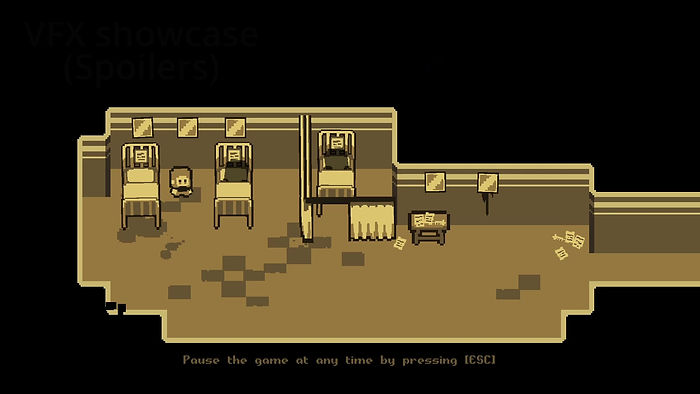
Pixelshader
Pre shader
Post shader
